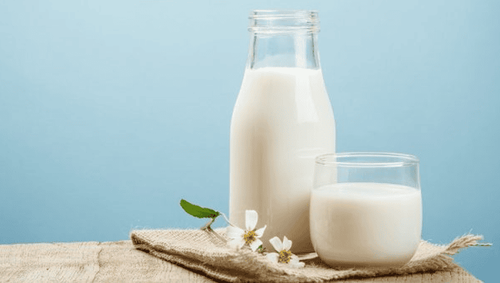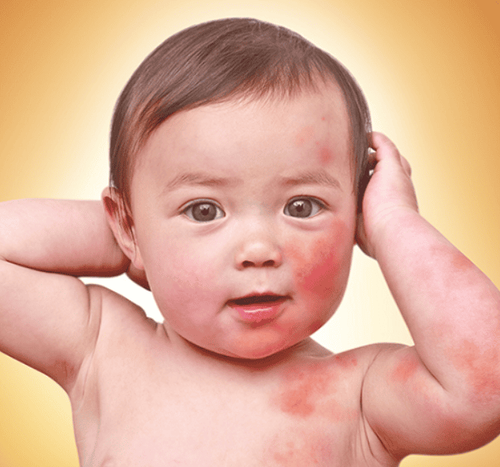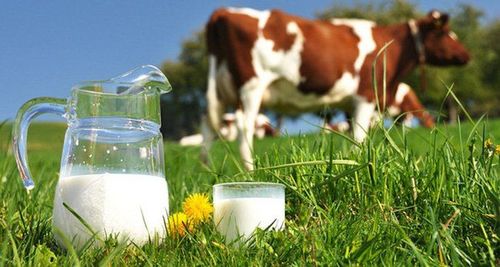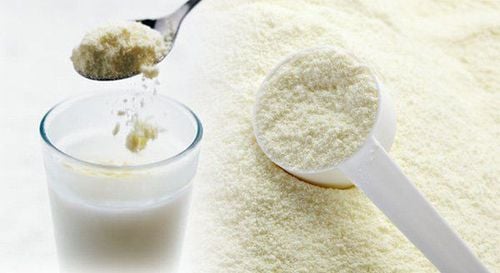This is an automatically translated article.
Cow's milk protein allergy today is a matter of concern for many parents. When your child is diagnosed or suspected by a doctor to have a cow's milk protein allergy, you will probably wonder how to take better care of your baby. The following article will help you answer that question.
1. What is cow's milk protein allergy?
When a child has a food allergy, the child must follow a hypoallergenic diet. This means that your child cannot eat a food to which they are allergic or any product containing that food. Things your child is allergic to are called allergens.
Cow's milk protein allergy is an abnormal reaction to the proteins found in cow's milk. Milk allergy is most common in infants and young children. As they get older, many children will develop a milk allergy. Milk and dairy products are found in many foods. Conspicuous forms of milk are cream, cheese, butter, cream, and yogurt. Milk and dairy products can also be potential sources of risk in commonly eaten foods. To stay away from foods that contain dairy products, you must read food labels.
Milk provides an important source of calcium. Your child needs calcium for healthy bones, teeth and nerves. Talk to your child's health care provider about foods with calcium that you can give your child. Some examples are green leafy vegetables, calcium-fortified orange juice, figs, tofu and dried beans.

Dị ứng đạm sữa bò là phản ứng bất thường với các protein có trong sữa bò.
2. Causes of cow's milk protein allergy
Milk allergy is most commonly caused by an allergy to cow's milk, although some people are allergic to the milk of other animals such as goats, sheep, and buffalo.
In all allergies, the immune system reacts to activate molecules (allergens). Your immune system produces antibodies that detect the allergen, trigger inflammatory reactions, and release a chemical called histamine, both of which cause allergy symptoms.
3. Symptoms of cow's milk protein allergy
Symptoms of cow's milk allergy can appear within minutes or days after consuming cow's milk or dairy products. The severity of symptoms will depend on the person consuming it and the amount of cow's milk they consume.
3.1. Symptoms that may appear within minutes of having a small amount of milk include:
Red bumps on the skin - rash (urticaria). An itchy, red, weeping or scaly rash on the skin - dermatitis or eczema . Face swelling. Wheezing or persistent cough. Vomiting. Diarrhea . If your child is prone to a severe allergic reaction to milk, these symptoms can also appear very quickly.

Nổi mụn đỏ, phát ban, sưng mặt, nôn mửa, tiêu chảy,... là một số triệu chứng dị ứng đạm sữa bò có thể xuất hiện sau khi uống một lượng nhỏ sữa.
3.2. Symptoms of a serious allergic reaction include:
Difficult or noisy breathing. Tongue swelling. Swelling or tightness in the throat. Difficulty speaking or hoarse voice. Wheezing or persistent cough. Persistent dizziness or weakness. Pale skin.

Ngoài ra, trẻ có thể xuất hiện một số phản ứng dị ứng nghiêm trọng như khó thở, sưng lưỡi, khó nói, chóng mặt,...
4. What to do when the child is allergic to cow's milk protein?
If you or your child has been diagnosed with a milk allergy, treat it by completely avoiding milk or dairy products. This can be difficult to do. Health professionals advise that children who are allergic to cow's milk are often allergic to goat's milk and as such, it may not be possible to substitute cow's milk with milk of animal origin.
To avoid milk and dairy products, read food labels and avoid foods that contain milk or dairy products.
Only remove milk and dairy products from the diet of a baby or young child under strict medical supervision. Your doctor will need advice on alternative sources of calcium and protein, which are especially important for children. Alternative infant formulas also need to be carefully monitored. For example, some children with a cow's milk allergy will not be able to tolerate soy products.
Please dial HOTLINE for more information or register for an appointment HERE. Download MyVinmec app to make appointments faster and to manage your bookings easily.













